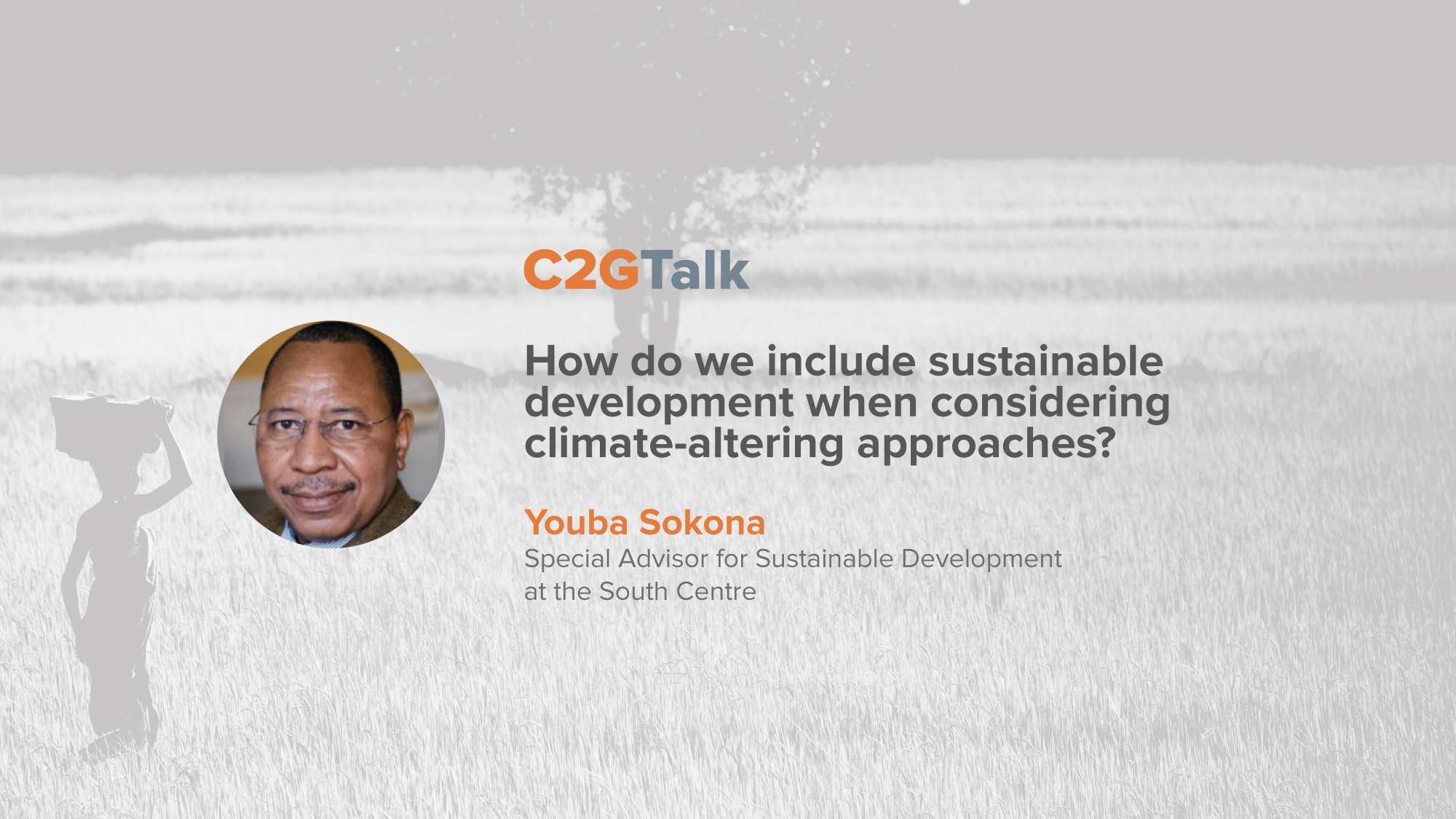Can we end hunger and reduce CO₂ levels
at the same time?

Martin Frick is Deputy to the Special Envoy for the UN Food Systems Summit 2021.
[The views of guest post authors are their own. C2G does not necessarily endorse the opinions stated in guest posts. We do, however, encourage a constructive conversation involving multiple viewpoints and voices.]
Re-greening our planet is the solution at hand to balance our out of whack carbon cycle and tackle the climate emergency. It is both proven, and cheap. It will also be instrumental for the achievement of the Sustainable Development Goals.
But we will not achieve it if we look at forests, peat lands, ocean grass and other so-called “nature-based solutions” as carbon sinks only. Functioning ecosystems are not only central to the carbon cycle; they are the basis of livelihoods, culture and identity for people. Healthy ecosystems protect biodiversity, water cycles, disaster risk reduction, global health, and – perhaps most crucially of all – food.
Food is the most basic human need. Without enough nutritious food, all our other ambitions fade. Yet the 2020 “The State Of Food Security And Nutrition In The World” has shown that access to safe and nutritious food is anything but a given for large parts of our global population.
“The most recent estimate for 2019 shows that prior to the COVID-19 pandemic, almost 690 million people, or 8.9 percent of the global population, were undernourished. If this trend continues, the number of undernourished people will exceed 840 million by 2030,” the report warns, in a foreword signed by the heads of the FAO, IFAD, UNICEF, WFP and WHO.
“Beyond hunger, a growing number of people have had to reduce the quantity and quality of the food they consume. Two billion people, or 25.9 percent of the global population, experienced hunger or did not have regular access to nutritious and sufficient food in 2019. This situation could deteriorate if we do not act immediately and boldly.”
Poor diet quality can lead to serious health deficits, such as stunting, obesity and diabetes. And, as ever, it is the poorest parts of our populations who are worst nourished. (This is as true for poor nations as for poor regions and neighbourhoods in rich countries.)
This is why the Secretary-General of the United Nations has announced a special summit on Food Systems to be held in Autumn 2021. It is a centrepiece of the Decade of Action to achieve the Sustainable Development Goals.
Can we ensure our essential work to tackle climate change is in harmony with efforts to improve food security? It is a profoundly challenging task. Yet the simple reality is, we have no alternative.
Our interconnected challenges
Two major international instruments govern the UN’s work in the early 21st century: the Sustainable Development Goals and the Paris Agreement. Both are essential for a dignified life within planetary boundaries for all passengers on our joint spaceship. Success in one depends on success in the other.
Let’s start with climate. The IPCC special report on global warming of 1.5 ºC has made clear that the Paris Agreement’s goal of staying “well below” 2°C should be understood as 1.5°C – and that large-scale carbon dioxide removal will be needed to halt heating at this point.
One key element of achieving this at scale, to help keep us within the narrow climatic corridor that enables human civilisation, is through photosynthesis, which uses solar radiation to crack CO₂ molecules into carbon and oxygen.
Yet plants that are only planted to absorb carbon out of the atmosphere will not grow for long if local populations do not see a direct benefit for their local needs. SDG 13 on climate change is one out of 17 interdependent and mutually reinforcing Sustainable Development Goals, all of which play a key role in determining political and economic priorities. And of these, perhaps none is of more immediate concern to more people than SDG 2: to end hunger, achieve food security and improved nutrition and promote sustainable agriculture.
Yet right now, the food system is not working in concert with our climate objectives, or more broadly to protect the environment. From a climate perspective, our way of producing, distributing, consuming – and wasting – food might be the single biggest sectoral driver of climate change.
Nothing consumes more water than agriculture, nothing kills more species, and nothing causes more deforestation than food production.
At the same time, we see that without effective action on climate, we will not be able to achieve our food security objectives.
The unfortunate reality is that failure to achieve our climate objectives will hurt our food objectives, and insufficient attention to achieving food security can undermine our climate objectives.
How do we overcome this vicious circle and achieve a mutually supportive system instead?
Bringing food and climate action together
Our preparations for the 2021 food systems summit explicitly recognise this challenge. That is why we have embarked on a one-year global and inter-sectoral engagement process, to tackle some of these tough questions.
We have established a scientific group, which includes the chair of the IPCC, as well as a global network of champions, to promote food systems dialogues in every single member state of the United Nations. This work will follow five action tracks – on access to good and nutritious food, consumption, nature positive production, livelihoods and resilience.
Our common goal to keep global heating within a manageable level will be a central element of these discussions.
To that end, I hope that the community which engages in questions of large-scale carbon removal will actively engage in these conversations, on a global, national and local level.
For some years now, my work has straddled both food and climate: I worked for both the UN’s Food and Agriculture Organisation, and the UN Framework Convention on Climate Change.
Along the way, I have come to see food as the central link between our environmental and social imperatives.
It’s only when we understand the systems dimensions of our global, interconnected planetary emergency that we will be able to create the game-changing solutions needed.
To learn more, you can click here.
Related posts:
How do we include sustainable development when considering climate-altering approaches?
C2GTalk interview with Youba Sokona
Land-based Carbon Dioxide Removal: as urgent and as difficult a policy challenge as ever
Guest post by Richard King and Duncan Brack
Climate Colonialism and Large-Scale Land Acquisitions
Guest post by Olúfẹ́mi O. Táíwò, Georgetown University


